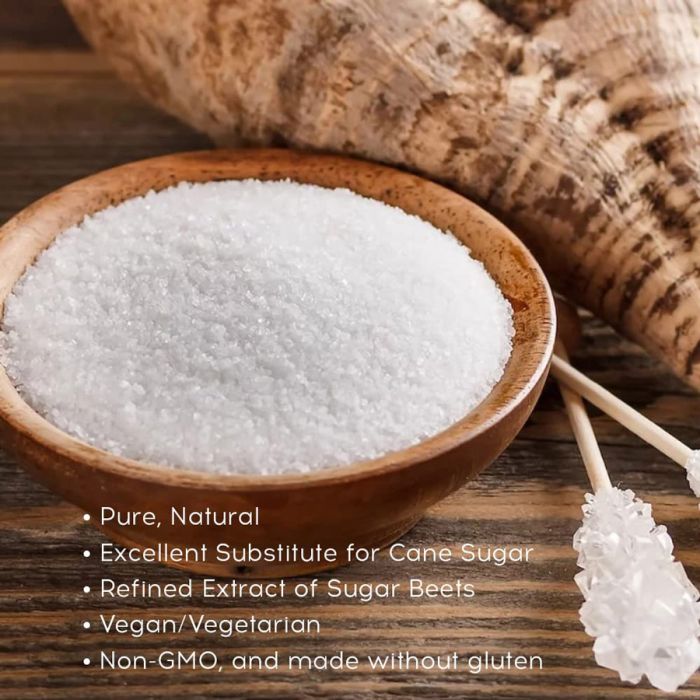The farming methods for beet sugar vs cane sugar contribute to differences in processing efficiency.
Exploring the Differences in operation and Benefits In Between Beet Sugar Vs Cane Sugar
In the culinary globe, the selection between beet sugar and cane sugar is not just about sweetness yet includes a nuanced factor to consider of flavor, application, and effect. While both sugars stem from various plants, each goes through one-of-a-kind production procedures that discreetly influence their features and suitability for numerous recipes.
Origins and Manufacturing Procedures of Beet and Cane Sugar

Walking stick sugar, on the other hand, comes from the sugarcane plant, a tropical yard belonging to Southeast Asia and now cultivated in tropical areas worldwide. The manufacturing of cane sugar starts with the harvesting of cane stalks, which are squashed to release the juice. This juice is after that boiled to focus it, after which it is spun in centrifuges to produce raw sugar crystals. These crystals are further refined to produce the white sugar typically readily available in stores.
Nutritional Content and Wellness Considerations

When contrasting the nutritional content of beet sugar and cane sugar, it comes to be evident that both kinds essentially provide the exact same caloric values, with about 16 calories per teaspoon and no substantial nutrient variety. Each is composed virtually entirely of sucrose, which is a basic carb that offers quick energy however does not have vitamins, minerals, or fiber. This similarity reaches their effect on wellness, particularly concerning blood glucose degrees. Both sugars, when eaten over, can add to raised blood glucose levels, a danger variable for diabetes and other metabolic conditions. Too much consumption can lead to weight gain and oral problems, as both sugars are equally cariogenic, advertising tooth degeneration. From a health point of view, regulating consumption of any kind of sort of sugar, whether from beet or cane, is suggested to avoid these potential adverse results on wellness. Hence, neither holds an unique advantage over the other in terms of health benefits.
Flavor Profiles and Culinary Applications
Despite their comparable chemical frameworks, beet sugar and cane sugar vary discreetly in taste, which can influence their usage in different culinary contexts. Walking stick sugar typically brings a hint of molasses, also in its refined kind, providing a cozy, caramel-like touch that improves baked products, coffee, and chocolate-based recipes. This small molasses flavor is especially valued in the baking industry for adding depth to desserts and breads. On the other hand, beet sugar is identified by its very improved, neutral taste, making it a functional sugar that does not change the flavor accounts of meals. This neutrality is specifically advantageous in delicate dishes, such as light pastries, creams, and some sauces, where the inherent tastes of other ingredients are planned to stand apart. Cooks and food makers might pick one type of sugar over the various other based on the preferred taste result of their culinary developments.
Ecological Influence and Sustainability
While both beet and cane sugars are acquired from plants, their environmental effects differ considerably due to the distinct methods of cultivation and processing required for each and every. Sugar beet farming often includes considerable mechanization, which can enhance nonrenewable fuel source consumption and carbon discharges. Beetroots can be grown in cooler environments and need much less watering, potentially lowering water usage contrasted to sugarcane. Sugarcane, on the other hand, is generally expanded in tropical areas where it depends greatly on irrigation and a much longer growing period, increasing its water impact.
In addition, the processing of sugarcane often produces a considerable quantity of waste, including bagasse, which, although functional as biofuel, often adds to air over here pollution if melted inefficiently. Sugar beet handling makes use of more of the raw materials, leading to less waste. Both sectors deal with difficulties in decreasing their ecological footprints, but ongoing innovations in farming practices and waste management are intending to enhance sustainability.
Economic Factors Influencing the Sugar Market
The economic characteristics of the sugar industry are considerably influenced by global market demands and trade plans. In regions where sugarcane or sugar beet manufacturing is subsidized, manufacturers may have a monetary benefit that enables them to offer lower rates on the international market.
Additionally, changes in international demand for sugar, influenced by nutritional fads and industrial usage in food, straight impact costs and manufacturing degrees. beet sugar vs cane sugar. Weather problems also play a critical function, as they can significantly impact crop returns and, consequently, the supply chain. This irregularity presents a degree of economic uncertainty that can lead to investment volatility in sugar production markets, influencing choices from planting to market technique
Verdict
To conclude, both beet and cane sugar have unique qualities that suit various culinary demands. While cane sugar imparts an abundant taste ideal for enhancing baked products, beet sugar's neutrality is excellent for lighter recipes. have a peek at this website Nutritional resemblances regardless of, their distinct production processes and environmental impacts include complexity to the option between them. Hence, comprehending these differences assists chefs and customers make educated choices that line up with their health, cooking, Bonuses and honest choices.